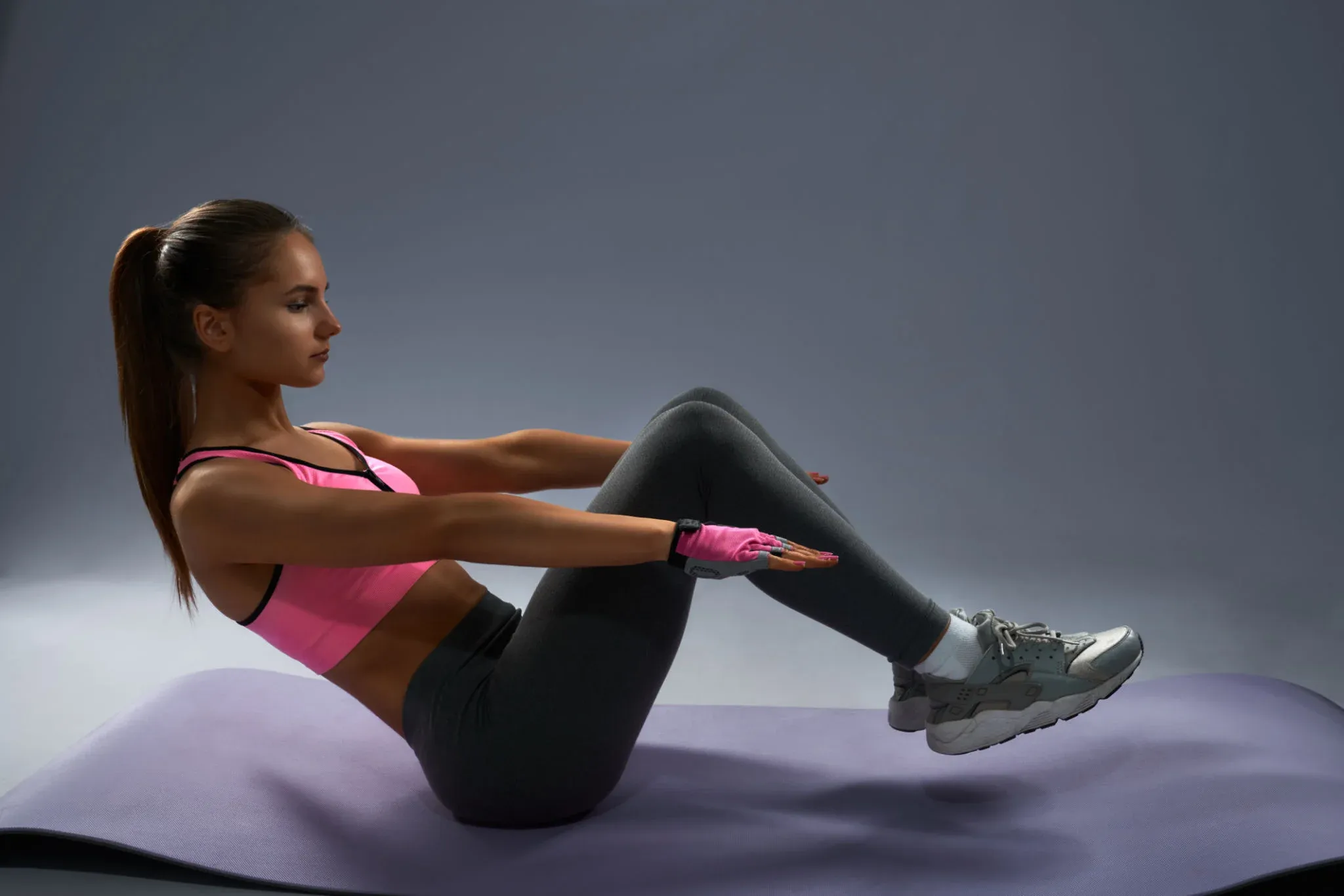The V-up is a core exercise for the whole body. It gets its name from the shape your body makes when you do it. You only need your body weight and a bit of floor space, but you can add loads to your V-ups workout if you want to. With the most common V-ups exercises, it's easy to learn how to do them. V-ups are wonderful foundational exercises that improve your stability and core strength. It helps you walk, run, and lunge more easily. Keep reading to learn about how to do v-ups, the benefits of v-ups exercises, and their variations.
What are V-Ups Exercises?
The V-up, also called a "jack knife sit-up," is a core exercise that works your abs, glutes, and hip flexors. V-ups help you build core strength because they work your rectus abdominis. To do V-ups, lie on your back and lift your upper body and lower body simultaneously into the shape of a V. Your legs and back must be at a 45 ° angle from the floor if you are making a move right. When doing a variation of the V-up, you might hold a free weight like a dumbbell or medicine ball.
Benefits of V-Ups Exercises
1. Improves Stability And Balance
To perform the exercise correctly, you must stabilize your core and adductors during V-ups. As a result, your balance will improve due to having stronger muscles of stability. Balance and core stability are also connected to better sports performance and fewer injuries.
Tale a Look: 10 Adductor Exercises For Body Strength & Stability
2. Core Strength
Working the rectus, obliques, and hip flexors is the goal of V-ups exercises. With persistent and strength training, you will build these muscles and begin to notice the definition in your stomach.
3. Lower Back Health
When you have a weak core, your back has to work harder to support your torso, increasing the risk of injury. You can alleviate some of the strain on your lower back by strengthening your core muscles.
How To Do V-Ups Exercises?
- Make sure you're lying flat on a workout mat, with both arms above your head and slightly off the ground. Your toes should point away from your body, and your legs should be close together and just a little bit off the ground. Throughout the action, keep your chin tucked in as if carrying an egg in your hands. It's best to have your rib cage and pelvis subtly tucked in. Get in touch with your centre. The starting point for all repeats should be here.
- Lift both your bottom and upper bodies off the floor at the same time, keeping your alignment intact.
- Form a V with your lower and upper bodies by continuing to lift them.
- At the movement's peak, pause for a split second.
- Slowly lower yourself to the beginning position while maintaining a long, lean upper and lower body.
Variations Of V-Up Exercises
1. In-and-Out V-Sit
Assume a hollow-body pose, placing your hands at your sides on the ground. It's important to keep your hands and feet on the ground while performing each exercise in this sequence. Repeat.
2. Angled Hollow Hold to V-Sit
For an elevated tuck crunch, start in a hollow-body position and immediately bring your chest and knees together into a tuck position. Move back to the hollow-body position, roll to your right, then roll to your left. Repeat.
 Benefits Of V-Ups Exercise
Benefits Of V-Ups Exercise3. V-Sit With Straight Legs
To perform this exercise. Begin by sitting upright, with both knees bent at a 90-degree angle and your feet slightly elevated from the floor. Make a full backward roll, with your back on the floor and your feet perched erect in the air. Take advantage of your momentum to return to your starting position. Do a standard V-up by straightening your legs upwards. Repeat.
4. V-Sit With Twist
To perform this exercise, begin by sitting upright, with both knees bent at a 90-degree angle and your feet barely off the ground. Make a full backward roll, with your back on the floor and your feet high in the air. Take advantage of your momentum to return to your starting position. Two Russian twists are required for this trick. Repeat.
Common Mistakes While Performing V-Ups Exercises
- Rounding the back is also a bad move that you should try to avoid. It could hurt the back. So, keep a straight line from your lower back to your neck and head the whole time you work out.
- Everyone also makes the mistake of swinging their arm when their legs are raised. It makes the core muscles work less well. So always start by putting your arms at your sides. It will help keep the arms parallel to the floor at the sides as you move.
- Many people make a common mistake to round their shoulders at the top. During a jack knife exercise, if you bend your back forward, it will put more stress on your lower back and take the attention away from your core. This will lead to a performance that can't be controlled and won't work on the abs.
Take a Look: Is Your Lower Back Pain Just A Discomfort Or Is It Sciatica?
Takeaway
Lastly, if you have problems with your back or neck, you shouldn't do V-ups exercises. Talking to a doctor before dealing with other medical problems is always best. But if it is done correctly, it is a safe move. Make sure you don't make any of the above common mistakes to avoid putting too much pressure on your spine or neck. Remember that this exercise will make your core muscles feel like they are on fire, but you should stop if you feel any sharp pain. Lastly, don't try this exercise if you are pregnant because it could lead to serious health problems.
Also Read: The Lazy Girl's Guide To Couch Exercises

